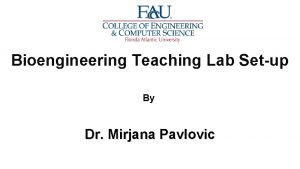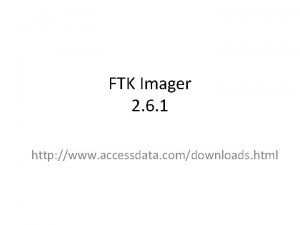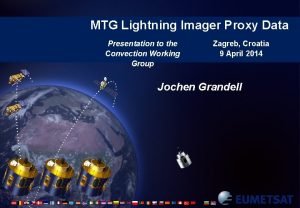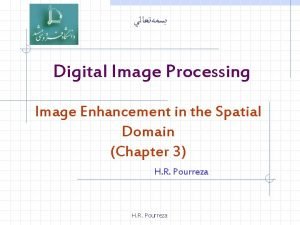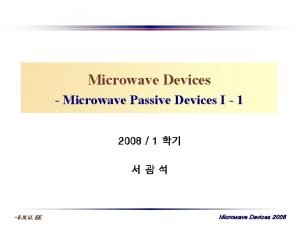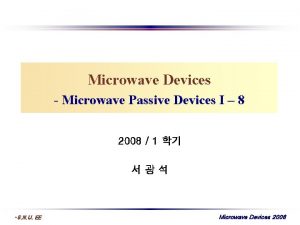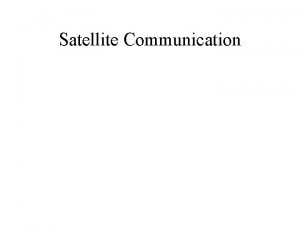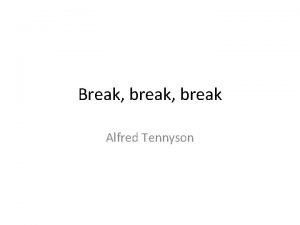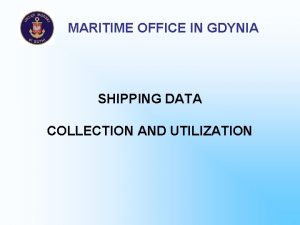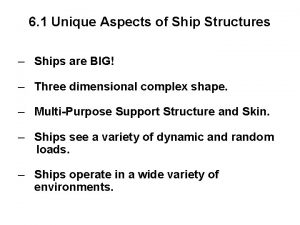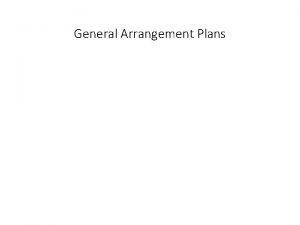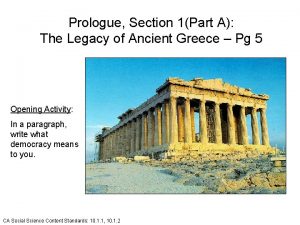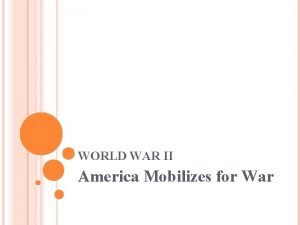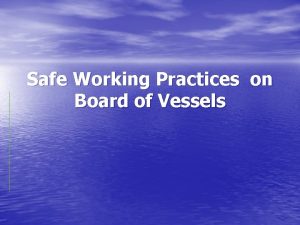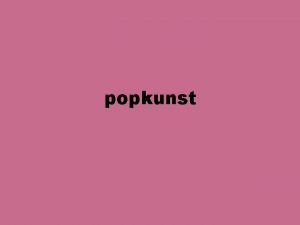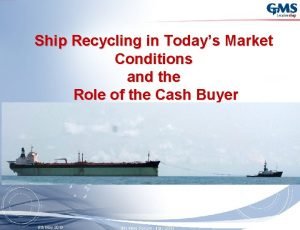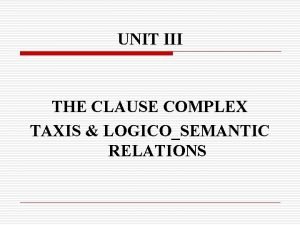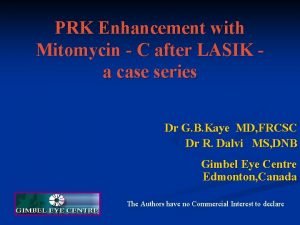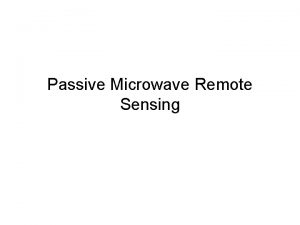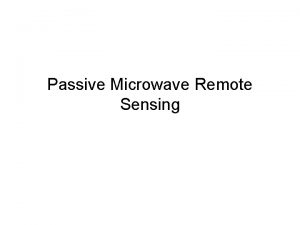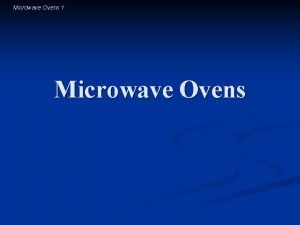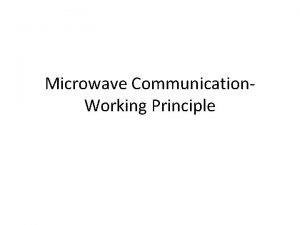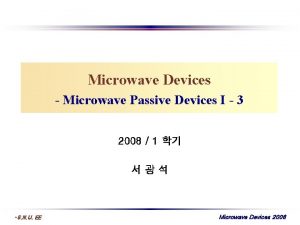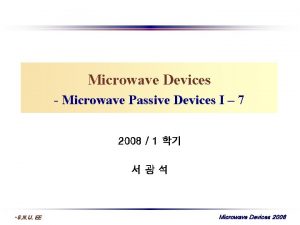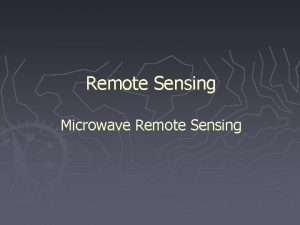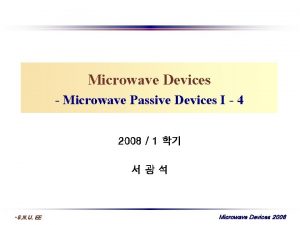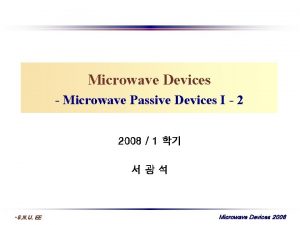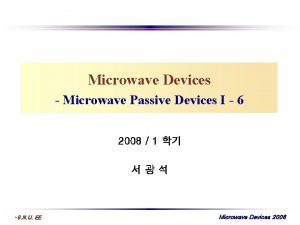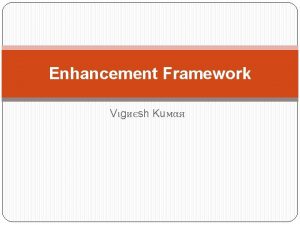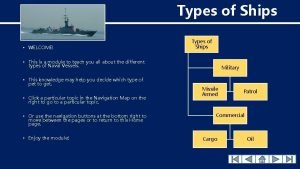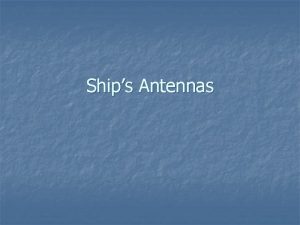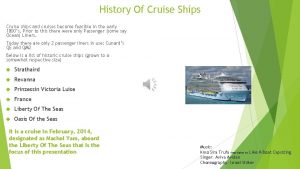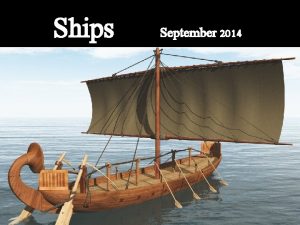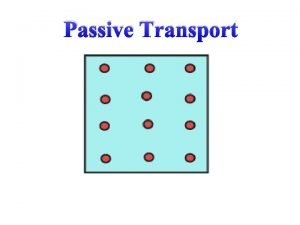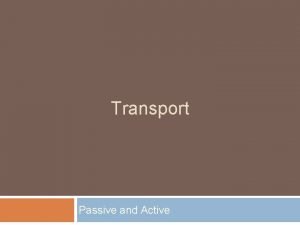Enhancement of SHIPS Using Passive Microwave Imager Data



























- Slides: 27

Enhancement of SHIPS Using Passive Microwave Imager Data— 2005 Testing Dr. Daniel J. Cecil Dr. Thomas A. Jones University of Alabama in Huntsville cecild@uah. edu

Acknowledgements: Funding support from NASA for research Funding support from NOAA for Joint Hurricane Testbed (2005) NHC Points of Contact: Chris Sisko Alison Krautkramer Stacy Stewart Mark De. Maria (NOAA/NESDIS) John Knaff (CSU/CIRA) Matt Wingo (UAH) Ty Martin (UAH)

Outline I. Intro Components of SHIPS-MI forecast II. Results from 1988 -2004 training sample III. Results from 2005 IV. Webpage examples

SHIPS-MI Forecast Intensity Change (DELV) = Sample Mean Climatology and Persistence + Environmental Terms + + Microwave Terms In E. Pacific: Latitude and 200 h. Pa Divergence added PSLV and VPER removed

Recent Progress Training sample size expanded substantially Now 1988 -2004 (~1600 24 -h forecasts) Previously 1995 -2003 (~900 24 -h forecasts) Code tested at NHC Ingest TMI and SSM/I near real time TBs Read SHIPS predictors from lsdiag. dat file Compute microwave predictors Generate SHIPS-MI forecast Write text output

Results from Training Sample MI training sample now goes back to 1988 IR+OHC adjustment in SHIPS goes back to 1995 Comparisons between SHIPS-MI and SHIPS use 1995 -2004 subset of training sample - homogeneous, dependent sub-sample - landfall cases are excluded

1995 -2004 Relative Errors Normalized relative to errors from the 2005 operational SHIPS coefficients SHIPS-E is the 2005 operational model without IR or Oceanic Heat Content adjustment Sample size is small at 60 h and beyond; improvement there is not meaningful BASE has the same predictors as SHIPS-MI, except microwave predictors are excluded Improvement due to MI is greater than improvement due to IR and OHC

1995 -2004 Mean Absolute Errors Same data as previous plot, except errors are not normalized Sample size is small at 60 h and beyond; improvement there is not meaningful SHIPS-MI improves over SHIPS through 48 h, essentially matches SHIPS after that

1995 -2004 homogeneous sample size Sample size for a homogeneous, dependent sample 19952004 (no jack-knifing applied) 1995 -2004 includes the IR+OHC adjustment to the operational SHIPS (only IR in E. Pacific)

1995 -2004 Relative Errors Normalized relative to errors from the 2005 operational SHIPS coefficients SHIPS-E is the 2005 operational model without IR adjustment Sample size is small at 60 h and beyond; improvement there is not meaningful BASE has the same predictors as SHIPS-MI, except microwave predictors are excluded Improvement due to MI is greater than improvement due to IR

1995 -2004 Mean Absolute Errors Same data as previous plot, except errors are not normalized Sample size is small at 60 h and beyond; improvement there is not meaningful SHIPS-MI improves over SHIPS through 48 h, essentially matches SHIPS after that

1988 -2004 Training Sample Size Mean Absolute Errors for a homogeneous, dependent sample 1988 -2004 (no jack-knifing applied)

1988 -2004 Atlantic Mean Absolute Errors for a homogeneous, dependent sample 1988 -2004 (no jack-knifing applied) SHIPS-E is the 2005 operational model without IR or Oceanic Heat Content adjustment BASE has the same predictors as SHIPS-MI, except microwave predictors are excluded Note that this is the entire SHIPS-MI training sample, but SHIPS uses a larger training sample, so SHIPS-MI (and BASE) has an unfair advantage in computing errors from this sample; this especially matters at long forecast periods where sample size is small

1988 -2004 E. Pacific Mean Absolute Errors for a homogeneous, dependent sample 1991 -2004 (no jack-knifing applied) SHIPS-E is the 2005 operational model without IR adjustment BASE has the same predictors as SHIPS-MI, except microwave predictors are excluded Note that this is the entire SHIPS-MI training sample, but SHIPS uses a larger training sample, so SHIPS-MI (and BASE) has an unfair advantage in computing errors from this sample; this especially matters at long forecast periods where sample size is small

Contribution by Predictor Type (ATL) Microwave and Sea Surface Temperature predictors are most important through 24 h Contribution from microwave decreases rapidly after 36 h SST contribution increases with time Shear terms are second most important (behind SST) after 36 h

Contribution by Predictor Type (ENP) SST and CLIPER terms (primarily LATITUDE) are most important in E. Pac. ; LAT is not included in Atlantic version Shear much less important than in Atlantic Persistence especially important for short range, Latitude especially important for long range Microwave has less impact at 18 -54 h than in Atlantic

2005 Atlantic Results Data collected in real time Forecasts re-generated in 2006, after expanding training sample back to 1988 Verification based on operational intensities, not best tracks Some scripting and network issues caused missing forecasts - Should have had fcsts at 30 -40% of synoptic times - Instead had fcsts at 25% of synoptic times

2005 RMS Errors (ATL) 12 -h 24 -h 36 -h 48 -h 72 -h 96 -h 120 -h 115 103 94 85 71 58 45 SHIPS-MI 8. 5 12. 4 16. 0 19. 3 21. 9 22. 5 27. 7 SHIPS 8. 7 12. 6 16. 4 18. 7 21. 3 21. 7 26. 3 OFCL 7. 4 11. 1 14. 6 17. 7 20. 9 22. 9 28. 4 SHIFOR 9. 2 14. 0 18. 8 21. 0 24. 8 25. 4 25. 5 # fcsts Landfalls excluded Operational estimates used for verification

2005 Bias (ATL) Landfalls excluded Operational estimates used for verification Negligible bias In 2005, SHIPS-MI tended to nudge forecasts a few kt in the right direction, compared to SHIPS

Individual 2005 Storms 36 -h RMS errors for those storms that had at least ten SHIPS-MI forecasts: For various reasons, only a few storms had 10+ SHIPS-MI 36 -h forecasts - scripting or network problems at UAH - SSM/I at bad time in GOM / W. Carrib, too late for fcsts

2005 errors (ATL) SHIPS-MI is better ~60% of time SHIPS is better ~40% of time Usually only a few kt difference Most improvement is for large underforecasts other forecast error For 24 -h fcsts: SHIPS-MI error

Webpage Examples Page is under development, hope to have it online with real time forecasts in 2006 User capable of altering input predictor values, generate new forecast Example: If you don’t believe the shear is accurate, input a new value Test to see how much impact an extreme predictor value will have

Webpage Example A B C D A) User can change any of the input predictor values In this example, the user increases SHEAR by 10 kt For reference, the: B) original forecast value C) training sample mean D) standard deviation are listed

Webpage Example Original SHIPS-MI SHIPS User-adjusted SHIPS-MI Best Track The extra 10 kt Shear causes extra 37 kt weakening by 72 -h

Impact from MI predictors Changing from common values for microwave predictors to the maximum reasonable values: User-adjusted SHIPS-MI Original SHIPS-MI SHIPS Best Track Increases forecast by: ~10 kt at 12 h ~25 kt at 24 h ~30 kt at 36 -48 h

Example Strong Positive Microwave Signal 19 GHz Horizontal TB 85 GHz PCT Hurricane Frances, 31 August 2004 MEANH 19 = 259 K

Impact from MI predictors Changing from common values for microwave predictors to the minimum reasonable values: Original SHIPS-MI SHIPS User-adjusted SHIPS-MI Best Track Decreases forecast by: ~10 kt at 12 h ~20 kt at 24 h ~25 kt at 36 -48 h
 Zoe fluorescent cell imager
Zoe fluorescent cell imager еele
еele Glucose is a product of
Glucose is a product of Lightning imager
Lightning imager Ftk imager
Ftk imager The objective of sharpening spatial filter is to
The objective of sharpening spatial filter is to Microwave passive devices definition
Microwave passive devices definition Microwave passive devices
Microwave passive devices Passive microwave repeater
Passive microwave repeater On a ship, its corresponds to a floor in a building
On a ship, its corresponds to a floor in a building Break break
Break break Six ships on the seanet program /forum/
Six ships on the seanet program /forum/ Ship hull
Ship hull Vessel general arrangement plan
Vessel general arrangement plan The turbine rotor of a ship has a mass of 3500kg
The turbine rotor of a ship has a mass of 3500kg Xerxes bridge of ships
Xerxes bridge of ships Finishes sorts labels and ships proteins
Finishes sorts labels and ships proteins How many liberty ships were built
How many liberty ships were built Safe working practices on board ships
Safe working practices on board ships Death ships
Death ships Famous tudor explorers
Famous tudor explorers Ship cash buyers
Ship cash buyers What is the smallest living unit in the body
What is the smallest living unit in the body Centrioles analogy
Centrioles analogy Paractactic
Paractactic Www.dfps.state.tx.us/training/trauma informed care/
Www.dfps.state.tx.us/training/trauma informed care/ Digital print enhancement
Digital print enhancement Prk enhancement
Prk enhancement
